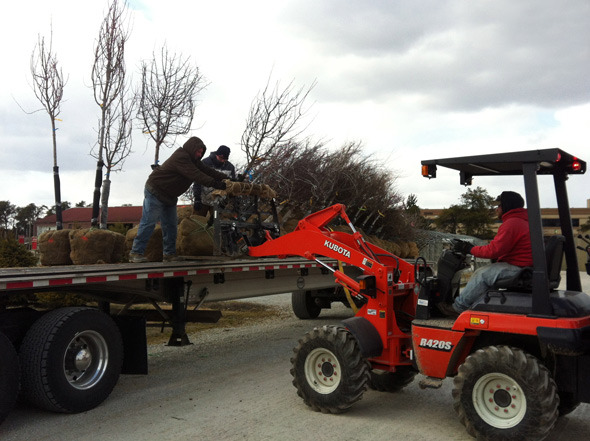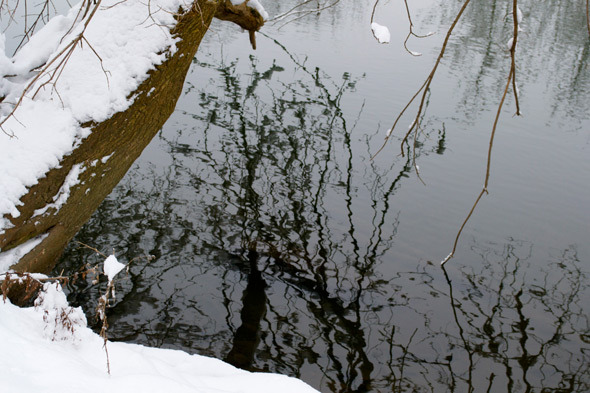Mowing season is here again. Follow these guidelines for a great looking lawn. This is a repost from 2011.
 The secret to a great looking lawn lies in the mowing. Sure, you may need to fertilize or use a herbicide from time to time, but proper mowing can help your lawn look lush and healthy all season long while reducing the need for frequent chemical applications. Follow my mowing guidelines (riding or pushing) to stay on the cutting edge:
The secret to a great looking lawn lies in the mowing. Sure, you may need to fertilize or use a herbicide from time to time, but proper mowing can help your lawn look lush and healthy all season long while reducing the need for frequent chemical applications. Follow my mowing guidelines (riding or pushing) to stay on the cutting edge:
- Mow at 2.5 to 3.5 inches
- Mow frequently
- Return the clippings to the lawn
- Fertilize in the fall
Let’s break it down…
Mowing Height
There are many benefits to keeping your mowing height between 2.5 and 3.5 inches. Chief among them is weed control.
It may seem counterintuitive, but mowing too short will increase weeds in the lawn. Like most plants, weeds want and need sun to grow. If you mow your lawn really short, you’re just giving them what they want. Consequently, weeds such as crabgrass and dandelions will proliferate. So set your mower at the preferred height and leave it there all season. It will minimize weed population.

Most species of grass do well with a mowing height anywhere between 2.5 and 3.5 inches. I think 3 inches looks great and is easy to remember. If you have a play area for children, I recommend you mow at 3.5 inches. It will feel luxurious and help soften their fall.
Lawns that are mowed at the recommended height will have deeper, stronger root systems and better color overall.
Mow Frequently
Mow frequently and follow the “One-Third Rule”– never remove more than one-third of the leaf blades at once. Removing more than one-third may cause root growth to cease while the leaves and shoots are regrowing. When growth is most active (spring), you may need to mow up to twice a week, but only once every 2 to 3 weeks when growth is less vigorous (summer).

Return the Clippings
It’s ok to let the clippings fall back onto the lawn as long as you aren’t leaving a dense layer. And, it doesn’t matter if you have a mulching mower or not, a discharge mower returns clippings just fine.
You return up to 25% of fertilizer nutrients back to the lawn in the clippings. And contrary to popular belief, clippings do NOT cause thatch build-up. See thatch note below. You will also help reduce water evaporation by returning the clippings. Bagging the grass takes a third more time to complete the job. Who wants that?
Note on Thatch from University of Illinois Extension “The primary component of thatch is turfgrass stems and roots. It accumulates as these plant parts buildup faster than they breakdown. Thatch problems are due to a combination of biological, cultural, and environmental factors. Cultural practices can have a big impact on thatch. For example, heavy nitrogen fertilizer applications or overwatering frequently contribute to thatch, because they cause the lawn to grow excessively fast. Avoid overfertilizing and overwatering. Despite popular belief, short clippings dropped on the lawn after mowing are not the cause of thatch buildup. Clippings are very high in water content and breakdown rapidly when returned to lawns after mowing, assuming lawns are mowed on a regular basis (not removing more than one-third of the leaf blade).”
One final point: if you must bag your clippings, please do not throw them in the trash. This can increase your trash by up to 10% and take up unnecessary space in landfills. A better option is to use the clippings as a mulch.
Fertilize in the Fall
This is an easy one. Like most people, I’m mowing very frequently in the spring and don’t need to increase mowing by stimulating growth with fertilizers. Fall fertilization promotes a healthy turf without stimulating excessive leaf growth.
If you’re inclined to fertilize only once a year, do it in September. If you would like to fertilize twice a year, do it in September and early November. And as always, read all fertilizer labels and follow the instructions.
Final Mowing Guidelines
- Use a different mowing pattern each time you mow
- DO NOT bump trees
- Do not mow when there is drought stress
- Do not mow when it is excessively wet

Be Safe
- Pick up all debris before mowing
- Keep hands and feet away from the blades
Be Environmentally Friendly
- DO NOT discharge clippings into the street
- Follow ozone alerts
Mower Maintenance
- Keep mowing equipment in good working condition
- Have mower serviced prior to the heavy spring mowing period
- Keep mower blades sharp for a clean crisp cut
TIP: A dull mower blade frays the ends of the blades and results in brown tips which are unsightly. Have mower blades sharpened prior to the heavy mowing season.






































































































































